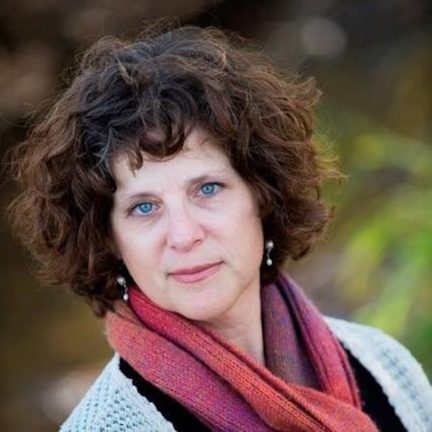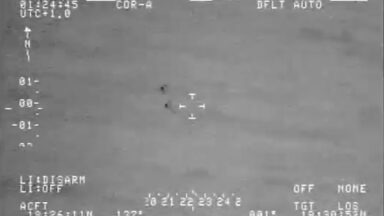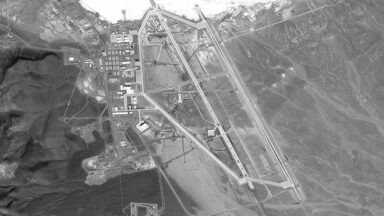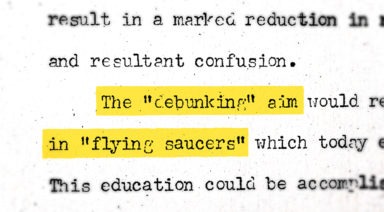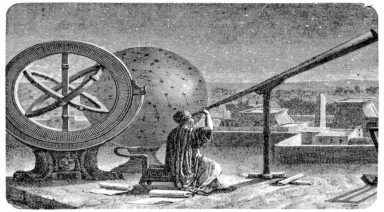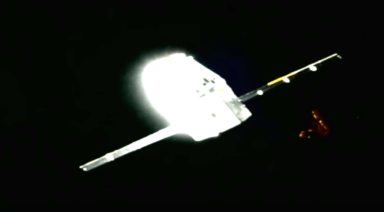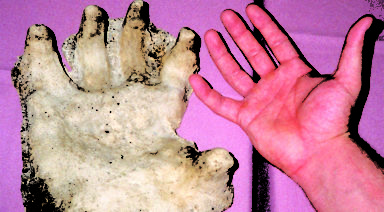Baba Vanga; Bulgarian Mystic’s Predictions Parallel Nostradamus’

The world is familiar with Nostradamus, Edgar Cayce, Madame Helena Blavatsky, and many others defined as mystics, seers, and clairvoyants who through their special talents have predicted important moments in global and personal history. Yet another name can be added to this list who was one of the most revered and seminal figure in the world of mystics, specifically in terms of 20th century political and natural occurrences; a blind woman who spent most of her life in the remote Kozhuh mountains of Bulgaria – Vangeliya Pandeva Gushterova, otherwise known as “Baba Vanga.”
For many, she is considered to be one of the most powerful clairvoyants, as well as a gifted herbalist and healer. Who is this mysterious mystic? How have her predictions impacted our world and we see our future? One path to understanding her mysterious influence is to explore our eternal fascination with future-telling and the paranormal.
Our fascination with future-telling seers and psychics is rooted in our human history, dating back to ancient Greek in which the word “psychic” means to breathe life back into the soul and is connected to the mythological goddess, Psyche. The Judeo-Christian texts refer to those who held an expansive view that bridged worlds or time frames as prophets; for others, mystics range from those who could read the stars to our dreams to predicting historical and cultural events, those who possess these special powers have been celebrated, worshipped, and vilified.
Where does Baba Vaga fit into this mystical legacy? To understand this, we must look at her humble beginnings in the mountains of Bulgaria.
Baba Vanga’s Humble Origins to Worldwide Impact
Born prematurely in 1911, Vangeliya Pandeva Gushterova in 1911, from her humble beginnings, Baba Vanga suffered a number of health complications, as well as personal difficulties. As a young child, her father was conscripted into the Bulgarian Army in World War I; her mother died soon after her father left for duty. Raised by neighbors in the Bulgarian village wracked by war, Vangeliya was considered to be highly intelligent for her age, exhibiting early signs of what was to later become her psychic and healing inclinations.
After the war and her father’s persecution at the hands of the Serbian government, the family fell into abject poverty when his property was confiscated. However, Vanga’s father eventually remarried, which provided a sense of much-needed stability and normalcy.
That life was to ultimately change when an unusual and violent storm struck and allegedly lifted the young Vanga into the air, depositing her in a field near the village. When she was found days later, her eyes had been sealed shut by layers of sand, grit, and dust with the extreme pain making it impossible for her to open them. Her family’s poverty left little money for more than a partial surgical treatment which rendered Vanga almost completely sightless.
Vanga attended a school for the blind, but when her stepmother died, she was forced to abandon her education to care for her younger siblings and to help support her struggling family. Throughout this time, she began to further develop her earlier mystical leanings, which began to attract attention, including from the Bulgarian Tzar Boris III, and Soviet leader Leonid Brezhnev.
What were these dignitaries, and so many others, seeking from the Baba Vanga? Her mystical insights were thought to be accurate and foreboding, predicting a wide range of events, tragic and global in impact.
Baba Vanga’s Many Predictions: Perceptive and Compassionate
It is reported that over 100,000 people visited Baba Vanga annually in search of her talents as a psychic and healer, often prescribing herbal remedies that helped cure ailments where conventional medicine had failed. One of the unique aspects of her psychic ability was her compassion; she was acutely aware that the information that came to her could dismantle a person’s life. Therefore, she would hold back if the news would be devastating, or encode her message so that the recipient would only understand it if and when the prediction came to pass.
Baba Vanga was known not only for the large number of her predictions but even more for the remarkable accuracy of those predictions, with a rate of 85 percent coming to pass, according to Georgi Lozanov, a Bulgarian professor of psychiatry and psychotherapy and the founder of the Institute of Suggestology who conducted extensive research on Baba Vanga’s success and failure prediction rates. Which of her predictions came true? From predicting the year of Joseph Stalin’s death, which resulted in her imprisonment, to her 1970s predictions of the fall of the Soviet Union, here are some of her more well-known and accurate prophetic insights:
- In 1989, Baba Vanga predicted the tragedy of 9/11 with these ominous words: “Horror, horror! The American brethren will fall after being attacked by the steel birds. The wolves will be howling in a bush, and innocent blood will be gushing”
- The 1986 Chernobyl disaster
- Princess Diana’s death
- The 2000 sinking of the Russian submarine Kursk
- She predicted the 2004 Thailand tsunami
- North Korea’s 2012 attack on South Korea
- In 2016, Baba Vanga predicted the election of the first African American president of the United States, Barack Obama
- In 2018, Vanga predicted China’s rise to power, superseding the United States
- The exact date of her own death and cause of death by breast cancer
Despite her death on August 11, 1996, Baba Vanga spoke of these predictions for 2019 and 2020:
- An assassination attempt on Vladimir Putin from within the Kremlin.
- More tsunamis and earthquakes hit Asia and Southeast Asia.
- A meteorite will fall on Russia.
- Economic hardships in Europe
- Health concerns for the 45th president of the United States
While her percentage for 2019 faltered to 65 percent, her other predictions relate to the acceleration of global warming that is sadly coming to pass, as well as warnings of world famine between 2025 and 2028, ice caps melting by 2045, cloning of organs by 2046, a return of Communism.
She also predicted that by 2100 the human race will have developed an artificial sun as a new source of energy. It is also reported that Vanga envisioned a time in which humans would merge with technology as a way to abolish aging and disease. Ultimately, life on Earth as we know it will be unrecognizable by 3797, with human civilization advancing to a new solar system.
Baba Vanga’s Wrong Predictions
What predictions did not come true? Baba Vanga did wrongly predict that President Barack Obama would be the last president of the United States, as well as disappointing millions of soccer fans with her incorrect prediction as to the outcome of the 1994 FIFA World Cup finals.
There is poignant irony that someone who lost her visual sight at an early age would emerge as one of the most sought-after and influential clairvoyants of our time. However, supernatural abilities as the result of lightning strikes and other near-death experiences are certainly a documented phenomenon.
As she said herself about her blindness and psychic ability, “This gift is given to me by God! He took my human eyesight away, but he gave me other eyes with which I can see the whole visible and invisible world. I started helping all other people that were suffering and became their support and hope.”
Her life and legacy are proof of the human spirit’s depth and ability to expand in time and space, often beyond the scope of our physical realm.
Will the blind prophet of the Balkans’ predictions for human civilizations and our planet prove to be true? While we will not be present to witness whether they come true or not, future generations will experience how Baba Vanga’s psychic visions unfold.
These Esoteric Texts Could Unlock Hidden Powers

When it comes to ancient texts that are inherently magical or purport to contain instructions for conjuring spells or demons, Wicca typically comes to mind. However, there are enchanted books from many different religious and spiritual backgrounds known as grimoires.
Grimoires usually contain instructions for casting hexes, summoning spirits, and the general manifestation of the metaphysical. There are myriad grimoires, varying in provenance and nature that have formed the basis for different religions as well as occult practices. There are even grimoires that have yet to be deciphered and continue to elude cryptologists.
Despite the enigmatic essence of grimoires, one thing that is certain is they contain power beyond just the nature of their words, whether by producing actual magic or not. Derived from the word “grammar,” grimoires teach us how to combine words in a grammatical way to conjure and achieve otherworldly effects; they are essential to esotericism.

